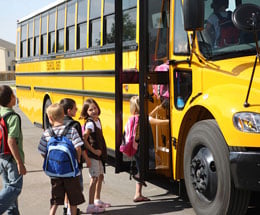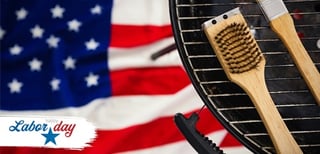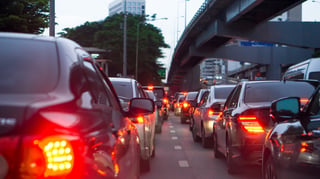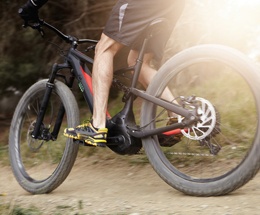
Another summer has ended and kids are back in school. Homework, bedtime routines, and chaotic schedules are again, part of our lives.
Back to school also means additional congestion on our roadways and in school parking lots. Now more than ever, it’s important for everyone to take a deep breath, slow down, and pay attention to their surroundings. Yes, put the phone down, it can wait!
According to theNational Highway Traffic Safety Administration (NHTSA), 1,344 people were killed in school transportation-related accidents between 2004 – 2013. This is an average of 134 people killed each year. Here’s a statistical breakdown of the fatalities.
- Occupants on school transportation vehicles – 8%;
- Pedestrians/bicyclists – 21%;
- Occupants in other cars – 71%.
In an effort to keep your neighborhood and school zone safe, here are some safety tips for you and your family.
School drop off and pickup safety
- Follow school procedures/traffic patterns. So often, you see parents creating their own traffic pattern through school parking lots. It’s imperative to follow the procedures and traffic patterns the school has implemented. Remember, they were put in place to keep our students safe. Your poor planning or late start in the morning should not jeopardize the safety of others.
- Avoid curbside drop off/pick up. If you’re dropping off or picking up your kids curbside, don’t do this if they have to cross the street alone. This puts them in a dangerous situation, especially if darting out between cars. Use this option only if your school has a crossing guard or flashing crossing lights.
- Consider carpooling. Carpooling has many advantages. A big advantage is reduced parking lot congestion.
- Get up earlier. I know this is tough, especially if you are not a morning person. By getting an earlier start to your day, you can avoid some of the congestion, frustration, and potentially dangerous situations.
Pedestrian safety
- Don’t block the crosswalk. Please keep the crosswalk open for children. If you block the crosswalk, this will cause them to walk around your vehicle, potentially putting them in harm’s way.
- Yield to pedestrians. Pay attention to school flashers, as well as the traffic light walk signal. Flashing lights or a lit up walk signal indicate that the pedestrian has the right of way. Many states are implementing stricter laws to improve safety. Click here to see how your state law requires you to drive around pedestrians.
- Be patient. Honking or yelling at pedestrians is not going to improve the situation. Also, be patient with the car in front of you. You may not be able to see why the driver has stopped.
Bicyclist safety
- Allow three feet. Safe passing laws require a motor vehicle to allow no less than three feet of clearance when passing a bicyclist.
- Right turn courtesy. If you are making a right turn, don’t speed past the biker and cut them off to make your turn. Stay behind them and allow them to ride through the intersection.
- Check your mirrors. Before you or your kids get out of the car, check your mirrors to make sure bikers are not passing by. A bicyclist may not anticipate or allow enough room for you to open your door.
High school parking lot safety
- Pull through the parking stall. When school ends, you will be able to see what is happening in front of you.
- Don’t rely solely on a back-up camera. The primary purpose of back-up cameras is to prevent “back over” accidents of young children who are not otherwise visible to the driver. It does not help you see pedestrians or other cars travelling through the parking lot. Continually move your head to scan all directions.
- Don’t jump into conversations. Make a rule that once everyone is in the vehicle, you’ll focus on exiting the parking lot safely. This means you won’t jump into conversations, you’ll turn off the radio, you’ll shut down all cell phones, and everyone will look in ALL directions for pedestrians, bicycles, and other vehicles.
- Avoid distracted walking. Put the device in your pocket. Use your eyes and ears to walk safely through the parking lot.
- Take responsibility. If you accidentally damage a parked car, wait for the other person so you can exchange insurance information, leave a note with your contact information or call the police. Never drive away because you think the other car is old or there is not much damage.
Please talk to your kids about staying safe this school year!
Source:
https://crashstats.nhtsa.dot.gov/Api/Public/ViewPublication/812170
West Bend, Scott Stueber on Sep 12, 2017 11:08:36 AM
.png?t=1504726823809&width=684&height=1711&name=Common%20Insurance%20Mistakes%20-%20Final%20(1).png)
 Is it just me, or is it hard to believe Labor Day is almost here? For many, Labor Day marks the unofficial end of summer. Many families celebrate with parties, picnics, or trips to their favorite campground or getaway destination one last time. While I cook on my grill all year round, it’s holiday cooking that I enjoy most.
Is it just me, or is it hard to believe Labor Day is almost here? For many, Labor Day marks the unofficial end of summer. Many families celebrate with parties, picnics, or trips to their favorite campground or getaway destination one last time. While I cook on my grill all year round, it’s holiday cooking that I enjoy most. Sarah Faris, senior personal lines underwriter will discuss how a West Bend policy covers these situations.
Sarah Faris, senior personal lines underwriter will discuss how a West Bend policy covers these situations. It seems like just yesterday we moved our daughter into her dorm for the start of her freshman year. In a few short weeks, she’ll be starting her junior year.
It seems like just yesterday we moved our daughter into her dorm for the start of her freshman year. In a few short weeks, she’ll be starting her junior year. When warm weather is here, many look for ways to enjoy our time outside. One of those ways is to get on a bicycle and go for a ride. With school a few weeks away, a bicycle can also turn into the main mode of transportation.
When warm weather is here, many look for ways to enjoy our time outside. One of those ways is to get on a bicycle and go for a ride. With school a few weeks away, a bicycle can also turn into the main mode of transportation.